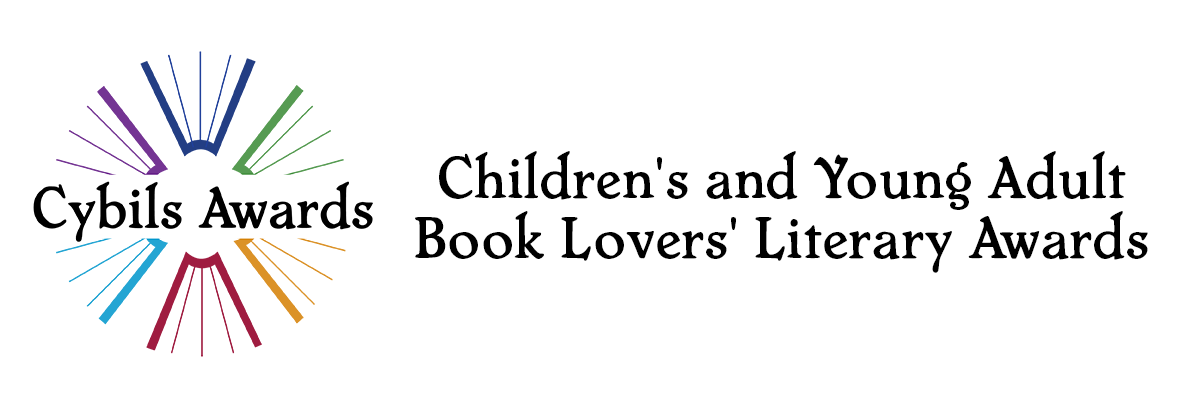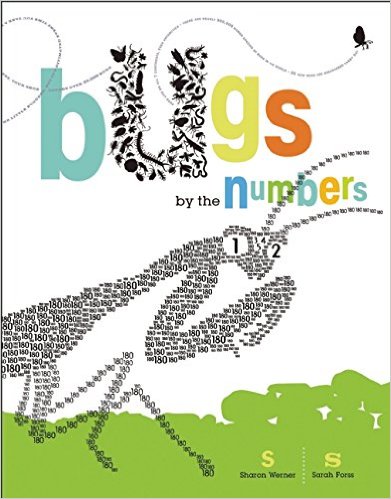Curated from past Cybils nominees and finalists, these ten picture books introduce a wide range of math-related concepts: from basic counting to using numbers to solve real-life problems.
–Amy Johnson, Sunlit Pages
 Animal 123 by Britta Teckentrup (2012 Fiction Picture Books Nominee)
Animal 123 by Britta Teckentrup (2012 Fiction Picture Books Nominee)
Britta Teckentrup’s beautifully textured illustrations are a perfect introduction to numbers and the concept of adding one more. Using foldout pages, one snake becomes two, then two elephants become three, etc. Each number is big and prominently featured on the page. This book is sure to be a winner with even the very youngest member of the family.
 Count the Monkeys by Mac Barnett, illus. Kevin Cornell (2013 Fiction Picture Books Finalist)
Count the Monkeys by Mac Barnett, illus. Kevin Cornell (2013 Fiction Picture Books Finalist)
The whole point of this book is to count the monkeys, but readers keep missing their chance. First, there’s a king cobra who scared all the monkeys away. Then there are a couple of mongooses (or is it mongeese?). It’s one crazy romp after another, giving the reader many opportunities to interact with book, but finding those monkeys is next to impossible.
 Pete the Cat and His Four Groovy Buttons by Eric Litwin, illus. James Dean (2012 Fiction Picture Books Nominee)
Pete the Cat and His Four Groovy Buttons by Eric Litwin, illus. James Dean (2012 Fiction Picture Books Nominee)
Pete the Cat has four groovy buttons on his shirt. He loves his buttons, but when one of them pops off, and he’s down to just three, he doesn’t cry about it. He’s happy with what he has. This book is a happy pairing of very simple subtraction and Pete’s unfailing optimism. Don’t be surprised if you catch yourself singing, “My buttons, my buttons. My four groovy buttons . . . “
 Bugs By the Numbers by Sharon Werner and Sarah Forss (2011 Nonfiction Picture Books Nominee)
Bugs By the Numbers by Sharon Werner and Sarah Forss (2011 Nonfiction Picture Books Nominee)
How many eyes does a praying mantis have? How many eggs can a termite lay in a single day? Bugs By the Numbers answers these questions and many more by examining the significant numbers in the lives of bugs. Numbers play a role in the illustrations as well–each bug silhouette is a conglomeration of hundreds of teeny-tiny numerals. Before long, your kids will know the answers to dozens of insect-related question, including, “How long can a cockroach can survive without its head?” (Trust me, you don’t want to know.)
 Ten for Me by Barbara Mariconda, illus. Sherry Rogers (2011 Fiction Picture Books Nominee)
Ten for Me by Barbara Mariconda, illus. Sherry Rogers (2011 Fiction Picture Books Nominee)
Two young explorers set off to see who can catch the most butterflies. Day after day, their catches add up to ten but in a variety of different ways. Ed takes an early lead, but the narrator soon evens the score when she finds a way to make herself more appealing to the butterflies. Told in rollicking rhyme with interesting facts on the side, this is the perfect book for any bug or math enthusiast.
 Lemonade in Winter: A Book About Two Kids Counting Money by Emily Jenkins, illus. G. Brian Karas (2012 Fiction Picture Books Nominee)
Lemonade in Winter: A Book About Two Kids Counting Money by Emily Jenkins, illus. G. Brian Karas (2012 Fiction Picture Books Nominee)
Selling lemonade in the middle of winter might not be the best business practice, but Pauline and John-John try it anyway. They buy all of the ingredients and supplies for six dollars (twenty-four quarters) and then try a variety of strategies to bring in the customers. They get a few, but very astute readers will keep track of the amount of money coming in and figure out, even before Pauline, that all of their efforts just aren’t any match for the freezing cold temps. A great lesson in money, math, advertising, and economics.
 Counting on Fall by Lizann Flatt, illus. Ashley Barron (2012 Nonfiction Picture Books Nominee)
Counting on Fall by Lizann Flatt, illus. Ashley Barron (2012 Nonfiction Picture Books Nominee)
Nature is bursting with opportunities to apply math, and this book does exactly that by presenting an imaginary scenario: What if animals did math? Would squirrels keep track of the number of nuts they store? Would geese divide themselves into groups of ten? For older kids, each page contains a little challenge or two where they can try out some new concepts. And hopefully, after they’re done with the book, they’ll be inspired to go outside and count all of the wonders in their own backyard.
 Mystery Math: A First Book of Algebra by David A. Adler, illus. Edward Miller (2012 Nonfiction Picture Books Nominee)
Mystery Math: A First Book of Algebra by David A. Adler, illus. Edward Miller (2012 Nonfiction Picture Books Nominee)
Algebra is like a real-life mystery. Using the inhabitants of a haunted house as subjects, Mandy and Billy learn all about how to add, subtract, divide, and multiply to deduce the answers to all sorts of problems. With simple instructions and helpful pictures to increase understanding, this is a great introduction to the fascinating world of algebra.
 How Many Jelly Beans? A Giant Book of Giant Numbers by Andrea Menotti, illus. Yancy Labat (2012 Nonfiction Picture Books Nominee)
How Many Jelly Beans? A Giant Book of Giant Numbers by Andrea Menotti, illus. Yancy Labat (2012 Nonfiction Picture Books Nominee)
It can be hard to visualize big numbers or put them in comparison to other numbers, but this book does just that. It starts with just a handful of jelly beans and gradually increases the number until it reaches one million (which requires the page to fold out many times and the jelly beans to be reduced to the size of pinpricks). It’s pretty memorable.
 The Boy Who Loved Math: The Improbable Life of Paul Erdős by Deborah Heiligman, illus. LeUyen Pham (2013 Elementary/Middle Grade Nonfiction Finalist)
The Boy Who Loved Math: The Improbable Life of Paul Erdős by Deborah Heiligman, illus. LeUyen Pham (2013 Elementary/Middle Grade Nonfiction Finalist)
From practically the moment he was born, Paul Erdős loved numbers. As a young boy, he performed complex mathematical problems in his head . . . like how many seconds his mother’s friend had been alive! As he grew older, he asked seemingly impossible questions and devoted his life to answering them. He was an eccentric, mathematical genius, but he was also very personable with a wide span of friends and supporters. Readers will be inspired by the way he dedicated his life to a subject he was passionate about.

